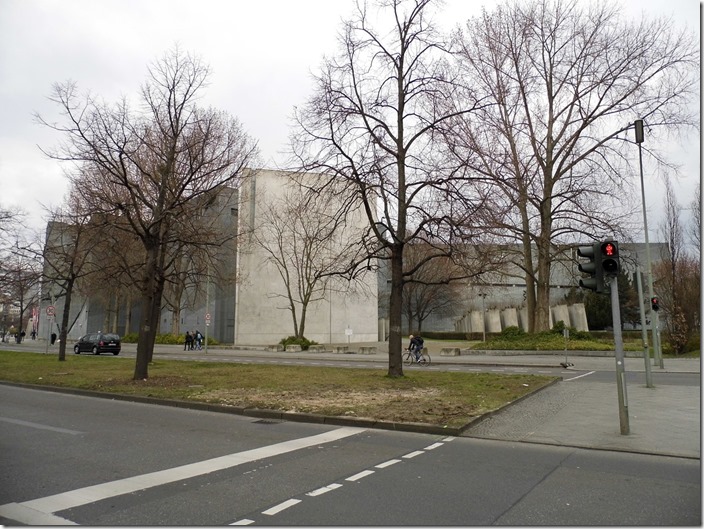Me he tardado mucho tiempo en publicar estas fotos de Venecia. No porque el viaje no haya sido genial, sino porque tengo tantas fotos que no sabía por dónde comenzar para poder ordenarlas. Y viendo mis archivos tengo un tercio de fotos de la ciudad, un tercio de la Bienal de Arquitectura y otro tercio de nuestro paseo en vaporetto. Así que empiezo por estas últimas.
It has taken me a long time to publish these pictures from Venice. Not because our trip wasn’t great, but because I have so many pictures that I didn’t know where to start to organize them. And looking at my archives, a third of the pictures are from the city, a third from the Architecture Biennale and another from our trip in a vaporetto. So I’m starting with these last ones.
16 October 2015
Una crítica arquitectónica subjetiva del edificio D de la Cité Universitaire de Genève
Leyendo el excelente libro Judging Architectural Value, me puse a pensar en qué edificio yo estaría en capacidad de evaluar, desde mi propia experiencia. Naturalmente, sería el edificio donde vivo, el edificio D de la residencia universitaria de Ginebra. No tengo pretensiones que este texto sea una crítica profesional. Por los momentos no tengo tiempo de ponerme a investigar sobre la historia de la residencia, o irme a ver archivos de los planos o entrevistar a los arquitectos. Mi intención es expresar el punto de vista de uno de los usuarios de este proyecto, el de estudiante y residente. De forma adicional, cuento con el bagaje adicional de mi formación como arquitecta y de haber vivido previamente en otra residencia, la de Talence, cuando estudié en Bordeaux. Estoy consciente que mi punto de vista está condicionado por mi experiencia personal en el edificio y hasta en cierta forma, en este país, pero la subjetividad no resta validez a mi opinión. Y esto es lo que es al final: únicamente mi opinión meticulosamente madurada.
Reading the excellent book Judging Architectural Value, I started to wonder what would be the building I would be better able to judge, from my own experience. Naturally, it would be the one I live in, the building D from the student residence in Geneva. I have no aspirations for this text to count as professional criticism. For the moment, I have no time to conduct research on the history of the residence, or to go to the archives to look for the blueprints or to interview the architects. My intention is to express the point of view from one of the users of this project, the student and resident. Additionally, I have on my side my training as architect and the fact that I have also lived in another residence, the one in Talence, when I studied in Bordeaux. I am aware that my point of view is conditioned by my personal experience in the building and, in a way, in this country, but subjectivity does not make less valid my opinion. And this is what it is in the end: only my meticulously pondered opinion.
El jueves pasado estuve en una conferencia de Daniel Libeskind en Ginebra, justo unos días después de haber terminado el libro Architecture’s Evil Empire? The Triumph and Tragedy of Global Modernism de Miles Glendinning, que denuncia la obsesión de la arquitectura contemporánea por los arquitectos como celebridades y de los edificios icónicos totalmente desconectados de su contexto.
Según Glendinning, la arquitectura de nuestra época es un imperio trágico, que a pesar de tener buenas intenciones – las de mejorar nuestro entorno – hace mucho daño, llenando las ciudades de objetos extraños que no tienen relación con la historia ni con la arquitectura local y haciendo que los arquitectos olviden su misión social por querer ser parte del juego de la fama. La arquitectura del Imperio englobaría todos esos edificios escultóricos que han proliferado en especial después del Guggenheim de Bilbao, que terminan costando mucho dinero, que da lo mismo en que ciudad estén implantados y que los hacen los mismos arquitectos una y otra vez. Mucho ha cambiado en los últimos años, en gran parte a causa de las crisis económicas y de que la gente ha empezado a tomar conciencia que los arquitectos deben hacer más por responder a las necesidades de las poblaciones desfavorecidas y del medio ambiente en peligro. Pero el Imperio todavía sigue siendo vigente, y Glendinning explica que si no cambiamos ese sistema ahora, el riesgo es que cuando la crisis haya pasado, la arquitectura vuelva a la falta de valores que la ha caracterizado en los últimos 35 años.
Last Thursday, I was on a lecture by Daniel Libeskind in Geneva, just days after I finished reading Architecture’s Evil Empire? The Triumph and Tragedy of Global Modernism by Miles Glendinning, which denounces contemporary architecture’s obsession with architects as celebrities and iconic buildings totally unrelated to their environment.
According to Glendinning, architecture in our time is a tragic empire, which in spite of having good intentions – improving our environment – it does a lot of harm, filling cities with strange objects with no relation with local history or architecture and making architects forget their social mission to be part of the fame game. The Empire’s architecture encompasses all of those sculptural buildings that have proliferated especially after the Guggenheim in Bilbao, which end up costing a lot of money, which it does not matter where they are located and which are signed by the same architects over and over again. A lot has changed in the last years, in part because of economic crisis and of people realizing that architects should do more to answer to the needs of people in need and for our endangered environment. But the Empire is still relevant, and Glendinning explains that if we don’t change the system now we are at risk of going back to the lack of values architects have had in the last 35 years, once the crisis is over.



Social Icons